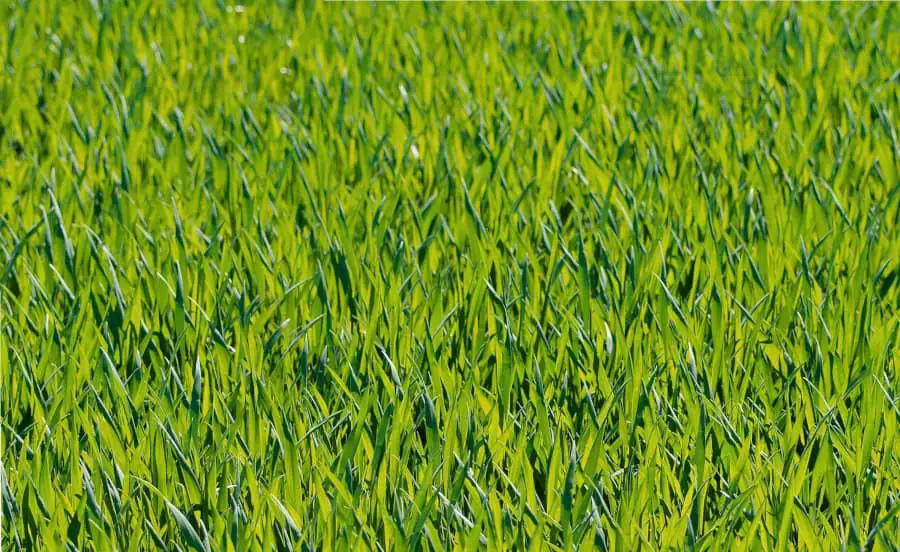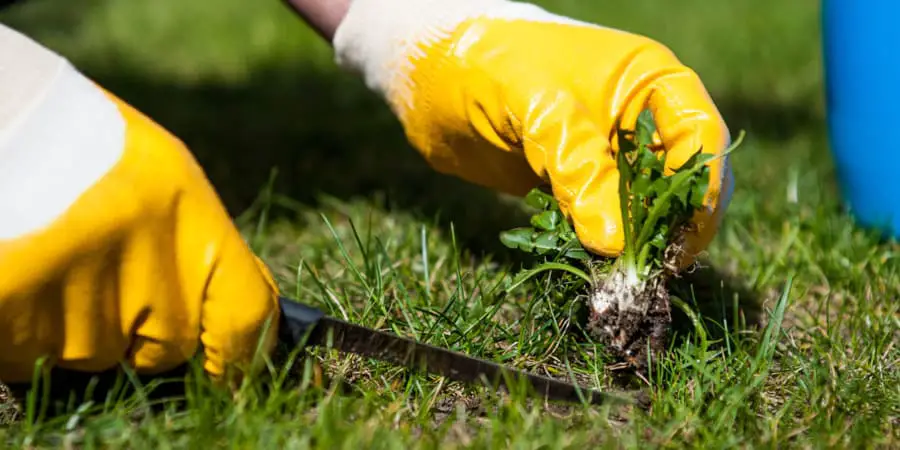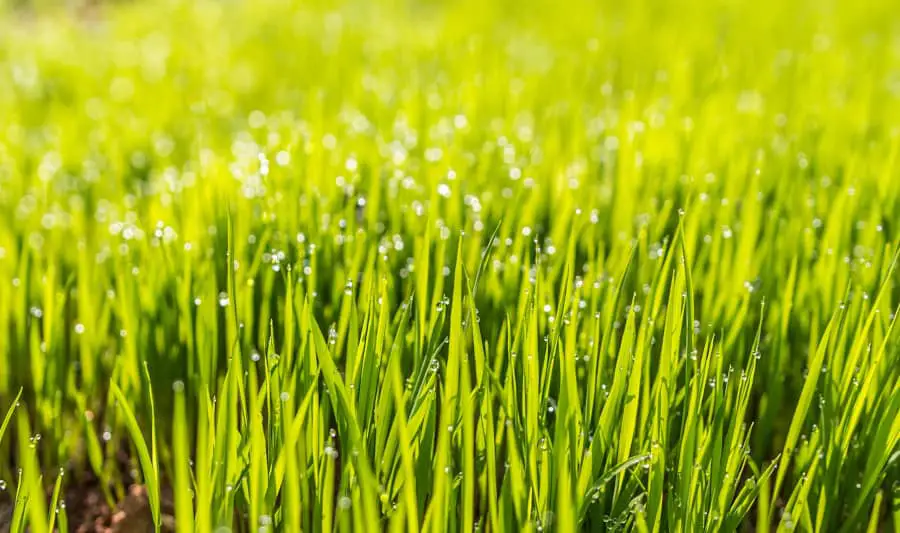Regardless of how much time you spend on cleaning and maintenance, a lawn can suffer from weed growth. Weed does not only appear unattractive but can also hamper the progress of other plants. Here are some ways to reseed a weedy lawn.
Lawn Renovation Tips
Whether it’s the cold winters or the hot summers, a good lawn can always come in handy. If you have neglected your lawn, now is the time to renovate it. Here are some tips to help you out.
- Choosing the Type of Grass Seed
- Finding a Weed Control Method
- Mowing the Lawn
- Dethatching the Lawn
- Aerating the Lawn
- Soaking the Soil
- Adding Topsoil and Nutrients
- Sowing the Seed
- Tamping the Soil
- Help the Lawn Grow
When to Start Lawn Renovation?
Lawns, regardless of their size, are precious to owners. Many people who own lawns are unsure of how to take care of them. The best way to ensure your lawn remains healthy and fresh is to renovate it when needed.
Lawns can be categorized into three. The first category is decent lawns. To be categorized as a ‘decent lawn,’ your lawn needs to be well-established and should only need some thickening up. It may also have some weed here and there. Decent lawns may also be slightly thinned in some areas.
The next category is the ‘mediocre lawn’. For your lawn to fall under this category, it should have multiple thin spots with a significant amount of weed in different places. These lawns may also be yellow-brown or otherwise dull in color. A mediocre lawn does not need a total makeover or overhaul; however, some help will be necessary to bring it back to life.
The last category is the ‘terrible lawn.’ It is the category with the poorest state of health, and you should try to renovate your lawn before it reaches this stage. Lawns in this category tend to have many bare spots of weed and very few spots of healthy grass. Such lawns lack color and will need a total overhaul.
The ideal time for renovation is from mid-august to mid-september. You can also do this during early spring when your lawn is beginning to grow and getting greener by the day.
Furthermore, once you have identified the category in which your lawn falls, it is time to decide the kind of renovation you want. If you have a decent lawn, small steps like aeration and weeding will help improve performance. However, if you have a mediocre or terrible lawn, you will need to adopt some measures to carry out a thorough renovation.

How Much Does Lawn Renovation Cost?
Contrary to what people think, lawn renovation costs aren’t very high. The exact cost depends on the property size and the condition of the place, but typically the entire expenditure is less than owners tend to estimate.
You also need to know that different renovation types will require a different amount of spending. Aeration and overseeding, two of the most common types of lawn services, are the least expensive and most popular. On the other hand, power seeding is quite expensive and may require you to loosen your purse strings quite a bit. A 5000 square meter lawn will require you to spend around $450 to $900. This is mainly because it requires intensive labor. However, it is also important to remember that expensive services like power seeding also yield excellent results.
That being said, you shouldn’t always look at prices and then choose the priciest one, expecting it to revolutionize your space. Sometimes a simple and affordable technique like aeration can do wonders for your lawn.
Tools and Equipment You Need
Some equipment proves to be extraordinary for your lawn renovation. These are commonly found and are available in a variety of sizes. Here is everything you need before you start the procedure:
- Lawn aerator
- Stand up weeder
- Dethatcher
- Soil Rake
- Spreader
- Lawnmower
How to Completely Reseed My Lawn?
Completely reseeding your lawn can be one of the best things you can do for the place. It will not only help make your lawn healthy but will also add beauty to it. Here are some ways to do this.
Choosing the Type of Grass Seed
This is one of the first and most important steps to reseeding your lawn. You have to select the highest-quality seed to ensure your lawn is free from any weeds or unnecessary grass species. One of the best types of grass seed is the tall fescue. It is desirable because it suits the kind of lawns in the mid-Atlantic area.
This is because this specific area is often termed the transition zone. Bluegrass cannot tolerate hot summers because the area is too far in the south for any northern grasses. Similarly, southern grasses are also not recommended because they are unable to bear the cold winters. Due to all these reasons, we recommend tall fescue and other similar type of grass seeds for your lawns.
Finding a Weed Control Method
Before you proceed with the stages to follow, you need to take care of one thing; weed control. Weed growth can not only hinder your progress but can also make your lawn appear unclean. There are a few ways to control the amount of weed growing on your lawn.
Preventative Weed Control
This refers to any control method that will prevent weed growth in any crop, greenhouse, or pasture. Popular ways to do this is by using certified weed-free seeds and using clean irrigation water to prevent any weed seeds from traveling to irrigation canals. Moreover, you can ensure that the hay you transport is weed-free and the equipment you use is cleaned before each use.
Mechanical
This refers to any technique that makes use of farm equipment to control the growth of weed. One of the most common techniques is using stand-up weeders to remove single large weeds. You can also use things like a soil rake to collect leaves, hay, and grass.

Chemical
One of the safest and most trusted weed control methods involves chemical procedures. As the name suggests, this method requires you to apply any herbicide or chemical to control weed growth. However, this is not a common method for home lawns. It is primarily used for large-scale industries where a large space needs to be renovated. Some of the most common examples of this include 2.4 DB, bromoxynil, paraquat, and EPTC.
Biological
Due to its biological nature, this method is rapidly growing in the industry. It includes techniques that use the natural enemies of weed plants to control the germination of weed seeds. Some of the most common methods include using sheep to control leafy spurge. Moreover, some people use tansy flea beetles to control tansy ragwort.
Mowing the Lawn
Mowing is integral to renovating your lawn. Ideally, you should begin to mow new turf when it is about one-third higher than your standard mowing height. Make sure you don’t remove more than one-third of vegetation when you decide to renovate your lawn.
You need to keep the blade as sharp as possible during the process. This is because dull blades tend to tear up the grass and lead to brown edges. If mowing during renovation is done correctly, you get to enjoy a healthy, drought-tolerant lawn that yields impressive results.
Dethatching the Lawn
Lawns, much like humans, cannot live without air, water, and essential nutrients. Thatch is a layer of dead sterns and crowns, and is often found between the soil surface and vegetation. This layer can prevent water, nutrients, and air from reaching the soil. A new seed often germinates inside the thatch rather than in the soil.
A lot of people also get confused about the amounts of recommended thatch. A thin layer of thatch, roughly half an inch, is helpful as it provides the much-needed insulation against extreme temperatures and moisture. However, a thatch layer that is around 1 inch can be extremely dangerous and can destroy the healthy growth of your lawn. Thatching may develop due to over-fertilizing and over-watering of your area.
When this happens, you need to carry out a process called dethatching. This process helps restore the passageway to the soil so that the seed can survive and germinate properly. The best time to dethatch, especially for northern grasses, is late summers. You can use a thatching rake that will rip the thatch out of the lawn.
Aerating the Lawn
Aeration is one of the most critical services for a lawn. During this process, a professional core aerator extracts small cores from the soil. These cores are then left to break down naturally and go back into the earth’s surface.
This step allows more oxygen, water, and a plethora of nutrients to enter the surface and provide strength to the soil. In the next step, when you apply the seeds, they enter the holes that have been created by aeration. This thus ensures better seed-to-soil contact. Additionally, this helps you create a thicker and healthier lawn in the long run.
Aeration also helps create openings in the lawn thus allowing all the nutrients to reach the grass roots. You can also choose an aerator that will extract plugs of soil about 2 to 3 inches. It will then deposit them onto the lawn that you have to renovate. You should ideally let these plugs of soil decompose naturally. Another thing to remember is to aerate the soil when it is only moist. Doing so when the soil is too wet or dry will be detrimental to the lawn renovation process.
Moreover, aeration also helps in ensuring that roots grow deeply and hence lead to a more vigorous lawn. This is one of the most important steps towards soil compaction that actively helps in lawn renovation.
Soaking the Soil
Soaking the soil will help you in reducing erosion and runoff. This will not only keep nutrients inside the soil but will also lead to an overall better and healthier plant growth.
To soak the soil, you need to add water to a depth of about 6 to 8 inches in total; however, there is a catch. The most important thing to keep in mind is that you don’t want to add too much water into the soil, leading to standing water. A good technique is to soak the water and then wait for some time. Once the water has moved into the soil, you can soak it again.
Adding Topsoil and Nutrients
When renovating your lawn, you should dress the entire area with a layer of topsoil. You can grow an entirely new lawn by simply applying tilling leaf compost onto the above 6 to 8 inches of soil. You then have to rake it smooth to get a healthy new lawn.

Sowing the Seed
Once you are done dethatching and aerating your lawn, it is time to overseed. By this time, you have holes throughout your yard, and seeds can easily go in and reach the soil. You can grab a hand spreader to add seeds to smaller areas throughout the lawn. Next, you can use a lawn spreader to add seeds to larger ones.
Tamping the Soil
Tamping the soil is also one of the most crucial steps to reseeding your lawn. It requires you to tamp down the area firmly and ensure that the seed goes deep into the soil. Another thing to remember is that good contact between the seed and the soil is necessary to achieve good results. Moreover, you can cover your seed with straw, Greenview seed accelerator, and leaf compost.
Help the Lawn Grow!
Your lawn renovation is now complete. However, if you don’t follow some necessary steps afterwards, you are setting yourself up another renovation soon. Here are some things that will help your lawn grow faster.
Watering
Keeping moisture inside the soil is important for two main reasons. Firstly, it will ensure that your seed gets the necessary water throughout the day. You can carry out this step by applying light watering throughout the day.
Mowing
Once you are done with the overall renovation, you need to pay special attention to the mowing process. You should ideally do this after a week or ten days. This will not only keep your grass stronger, but will also allow it to recover faster. You can use a durable and strong lawnmower to ensure better results. Additionally, frequent mowing will ensure good growth. All this helps prolong the benefits of your renovation.
Fertilizing
Fertilizers, especially quality ones, can do wonders for your lawn. You can apply a good brand fertilizer either during seeding or a few weeks later. The exact type of fertilizer you need to add will depend significantly on the kind of lawn you have and the seeds you have inserted.
Weeding
The entire process of weeding is explained above. However, even when you have carried out all the necessary steps, some amount of weed may still grow. In such instances, you can easily hand-pull the weed that you see on your lawn, or use a stand up weeder instead.
Conclusion
Lawn owners will be happy to know that they can reseed their lawn in only a few simple steps. Once you have carried out the renovation steps, make sure to keep watering, mowing, and reseeding your lawn every now and then to keep it looking green.


